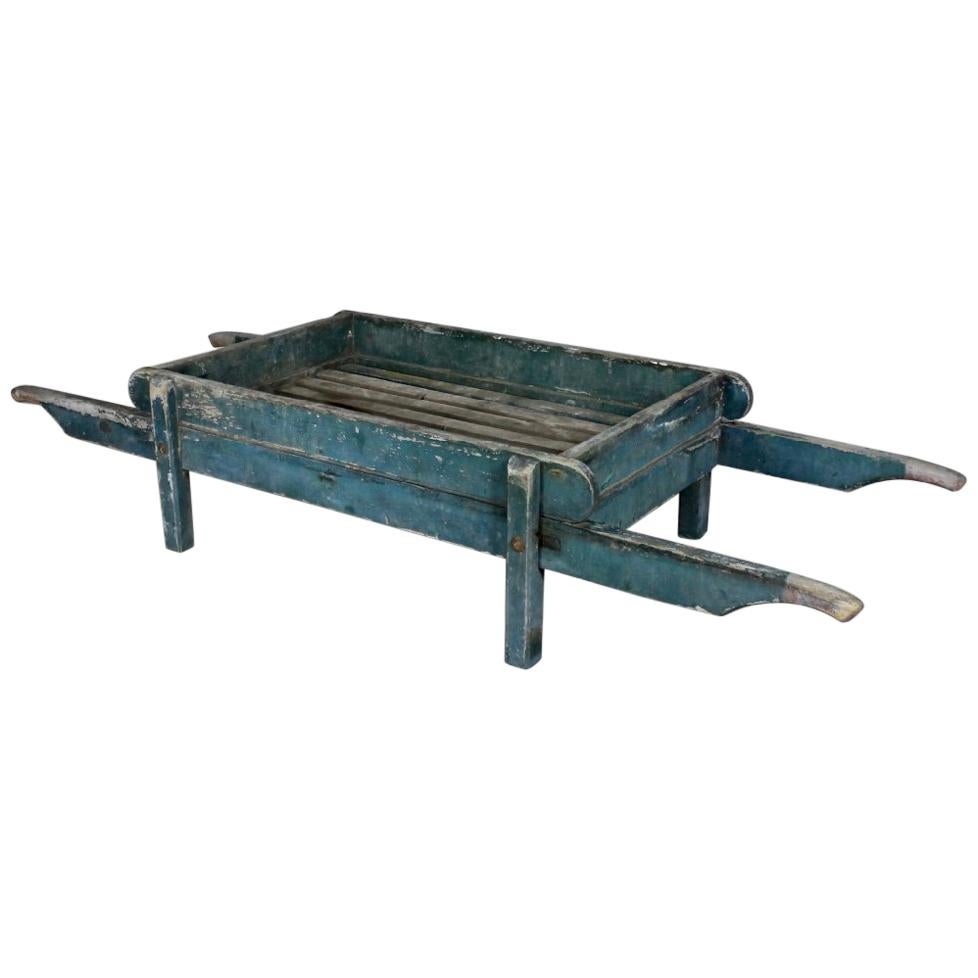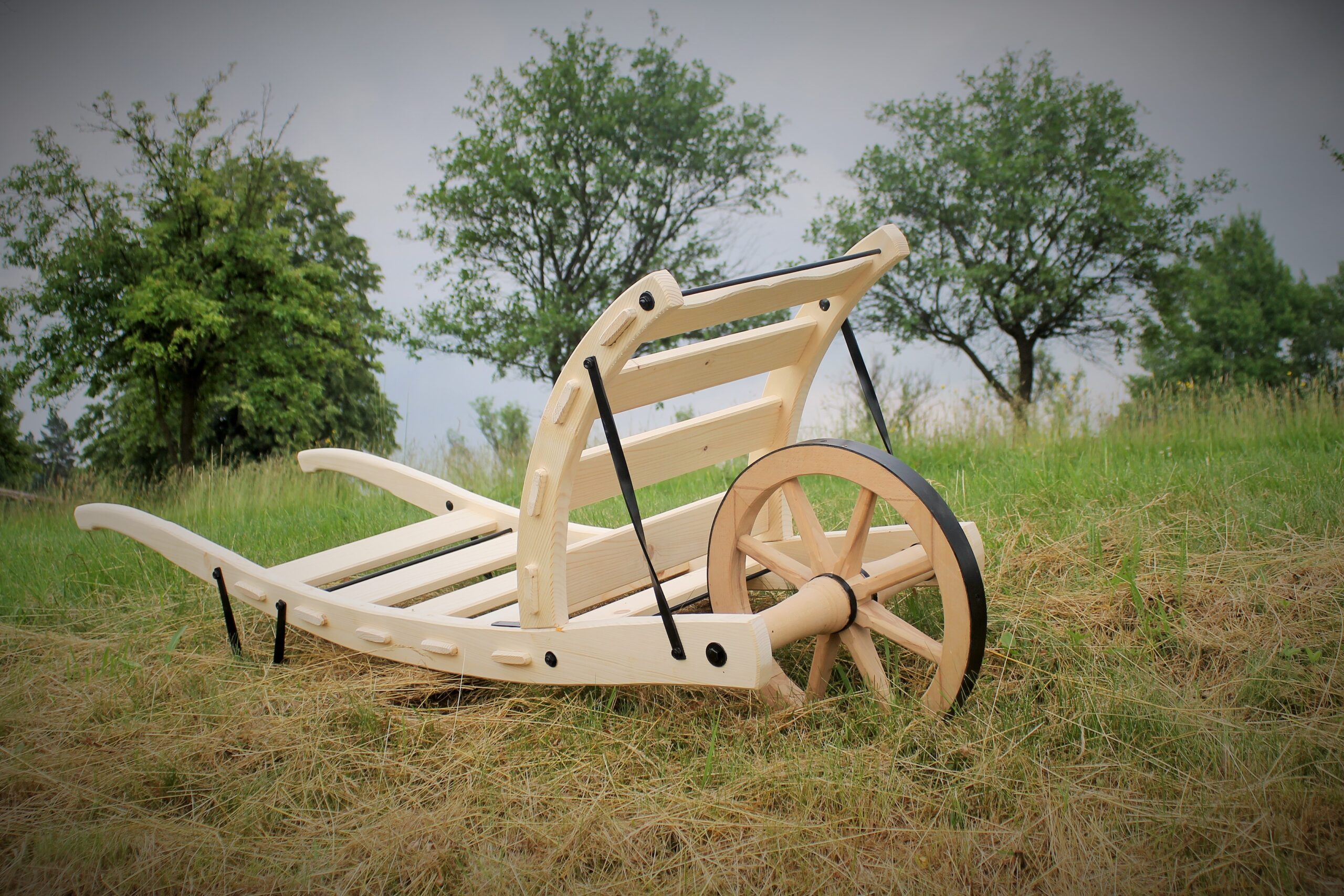Here are a few more images I had found of various flavors of handbarrow (also, hand barrow or hand-barrow):
https://en.wikipedia.org/wiki/Handbarrow#/media/File:Alkmaar,_cheese_market-1.jpg

which shows shoulder straps to the handles. I can imagine, like mover's straps (the "Forearm Forklift" of television advertisement fame), this would permit better mechanical advantage and less chance of back injury for very heavy loads.
An alternate approach to get a heavy load (perhaps manure for the kitchen garden) somewhat off the ground is this Edwardian handbarrow with integral legs (and side boards!):
https://a.1stdibscdn.com/edwardian-hand-barrow-by-william-woods-and-sons-for-sale/1121189/f_140649321553068080755/14064932_master.jpg

Though I can't spot it just now, I seem to recall having seen a handbarrow on sawhorses (rather than the integrated legs) for loading. Depending on circumstances, that could be a helpful approach as well to facilitate picking up a heavy load.
The Dutch version in the first link would permit placing the hand barrow directly on the ground, so that a heavy object could be rolled, slid or slithered onto it. Perhaps yokes, as would be used with a pair of buckets, could reduce the misery of the shoulder straps for the porters. Adjustable length suspension ropes, with some convenient blocking, might permit successive "picks" to get the load a bit higher off the ground to clear asperities and obstructions.
This historical photo (described as 1900-1935) shows Portuguese boys loading cork on a flat handbarrow:
https://omeka.emich.edu/files/original/7988/010_MJ_74_023_copy.jpg

(Why this photo is in a collection at Eastern Michigan University, I don't know.)
This modern wheel barrow is stylistically very similar to the handbarrow I spotted in Germantown:
https://joinerandson.eu/wp-content/uploads/2017/03/IMG_2569-scaled.jpg

But, as I said, there is not a whole lot online regarding handbarrow use and construction. Perhaps I should try to search for the French term in Joylynn's link...
Kevin










